
10 Best People Also Ask Tools in 2025
Use These Dedicated PAA Tools In 2025 – 2026
The other day, I was doing some research online and got curious about the “People Also Ask” boxes on Google. You know those little question boxes that pop up when you search something? They’re like Google giving you a sneak peek into what people are really wondering about.
I thought, “There must be a way to find all these questions quickly and use them for content ideas.” So, I started hunting for the best People Also Ask tools out there.
After trying several, I found a bunch of amazing tools that make it super easy to discover what your audience is searching for.
I loved them so much that I decided to put together this list of PAA tools for you, so you can save time, create smarter content, and get more traffic to your website.
Top 10 People Also Ask Tools

The “People Also Ask” (PAA) feature in Google search results has become a goldmine for content creators, marketers, and SEO professionals. It provides direct insights into user intent, helping to shape content strategies effectively.
To harness this potential, various tools have emerged, each offering unique features and capabilities. In this article, we delve into the top 10 PAA tools available in 2025, examining their functionalities, pricing, and how they can enhance your content creation process.
| Tool Name | Website URL | Pricing Overview |
|---|---|---|
| AlsoAsked | alsoasked.com | Basic: $12/month; Lite: $23/month; Pro: $47/month (alsoasked.com) |
| AnswerThePublic | answerthepublic.com | Individual: $5/month; Pro: $49/month; Expert: $99/month (answerthepublic.com) |
| KeywordsPeopleUse | keywordspeopleuse.com | Monthly plans starting from $15; Annual plans available (keywordspeopleuse.com) |
| Backlinko | backlinko.com/tools/people-also-ask | Free (Backlinko) |
| NeuralText | https://neuraltext.com/people-also-ask | Starter: $19/month; Basic: $49/month; Pro: $119/month (NeuralText) |
| RightBlogger | https://rightblogger.com/tool/people-also-ask | Free; Unlimited: $29/month (RightBlogger) |
| Frase | frase.io/tools/people-also-ask | Starter: $45/month; Professional: $115/month (Frase) |
| kwrds.ai | https://www.kwrds.ai/people-also-ask | Free; $39/month (billed annually) (kwrds.ai) |
| Allintitle | https://allintitle.co/people-also-ask-tool/ | Free; small: $30/month (https://allintitle.co/monthly-subscription/) |
| PeopleAlsoAsk.ai | peoplealsoask.ai | Basic: $9/month; Unlimited: $20/month (PeopleAlsoAsk.ai) |
Best 10 PAA Tools
1. AlsoAsked

website: alsoasked.com
AlsoAsked is one of the best PAA tools that helps marketers understand user intent more deeply. It visualizes search queries in a tree structure, allowing you to see how questions are connected and what people also search for around a topic.
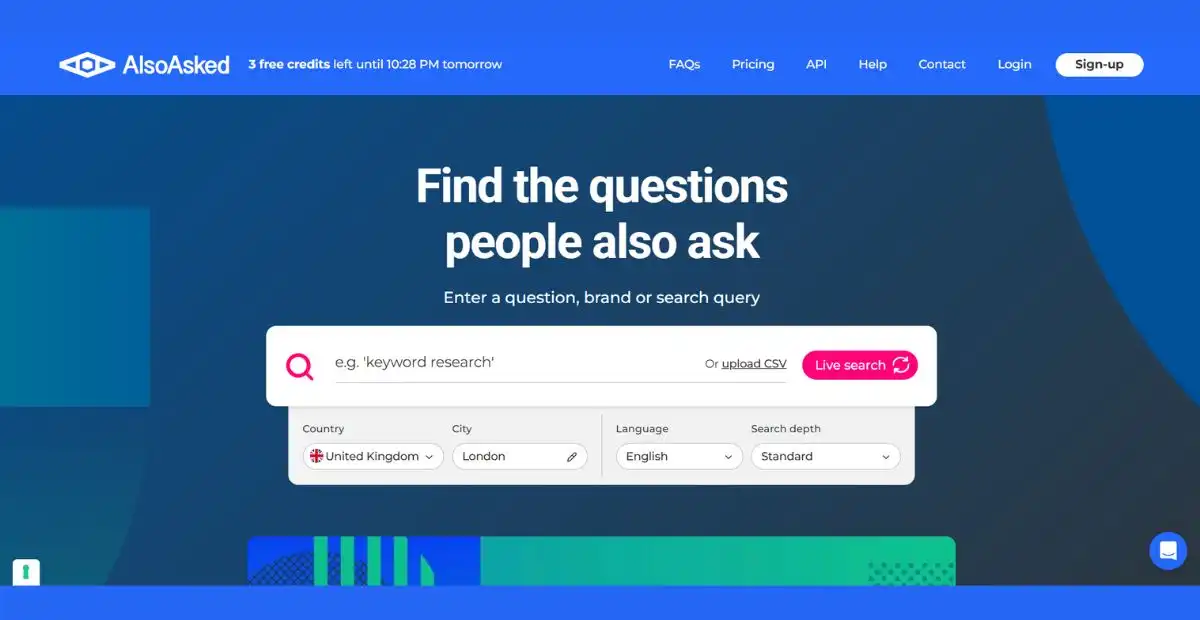
This makes it an excellent resource for content creators, bloggers, and SEO specialists who want to structure their articles in a way that directly addresses user questions.
By using AlsoAsked, you can identify content gaps and create highly relevant, search-intent-driven content that ranks better on Google.
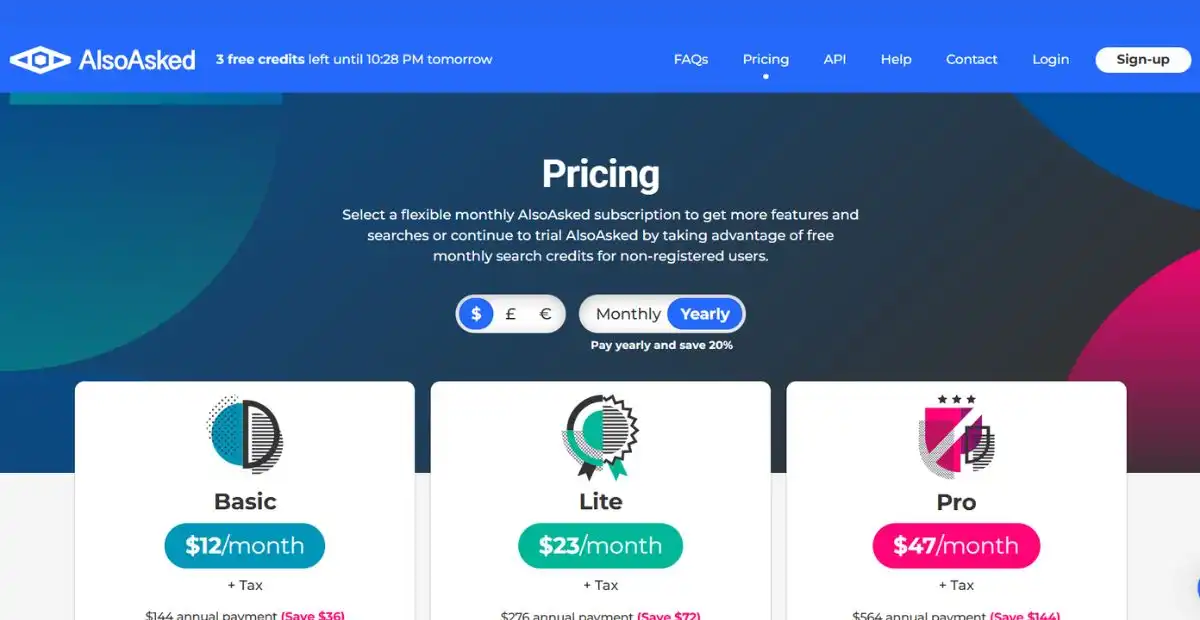
Pricing: Basic: $12/month; Lite: $23/month; Pro: $47/month
2. AnswerThePublic

Website: answerthepublic.com
AnswerThePublic is a popular keyword and PAA research tool that turns Google autocomplete data into meaningful insights. It displays results in visual wheels as well as data lists, making it easy to identify common questions, comparisons, and related searches.
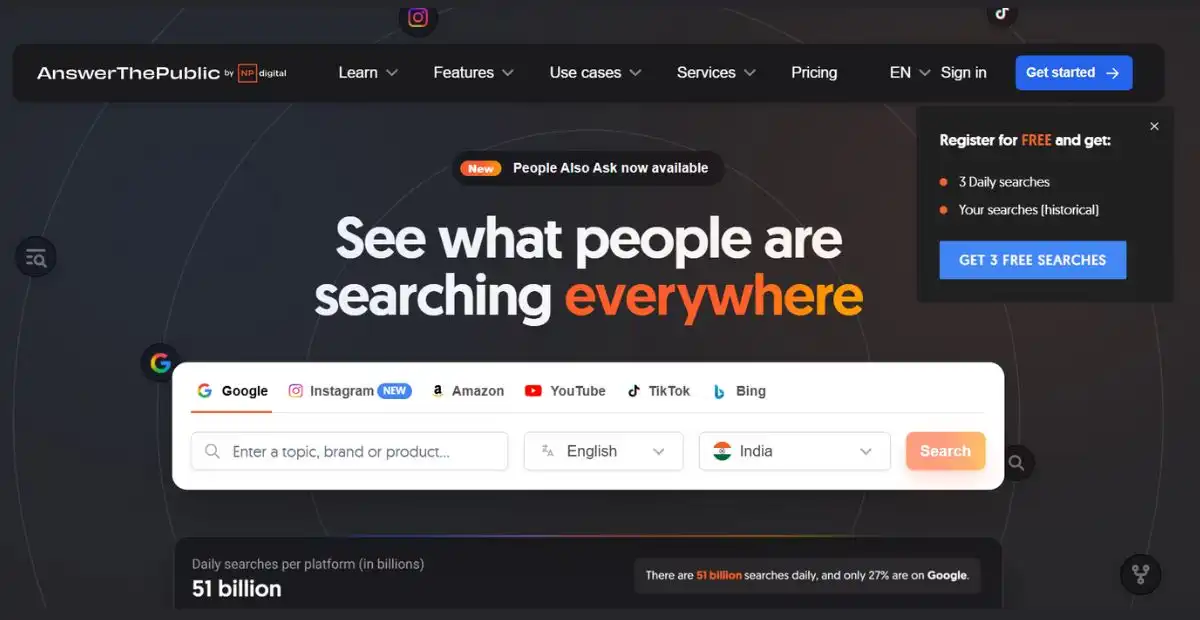
This tool is ideal for content creators who want to generate blog ideas, FAQ sections, or long-form content that aligns with what people also search for.
Its user-friendly design makes it one of the best PAA tools for both beginners and advanced SEO professionals.
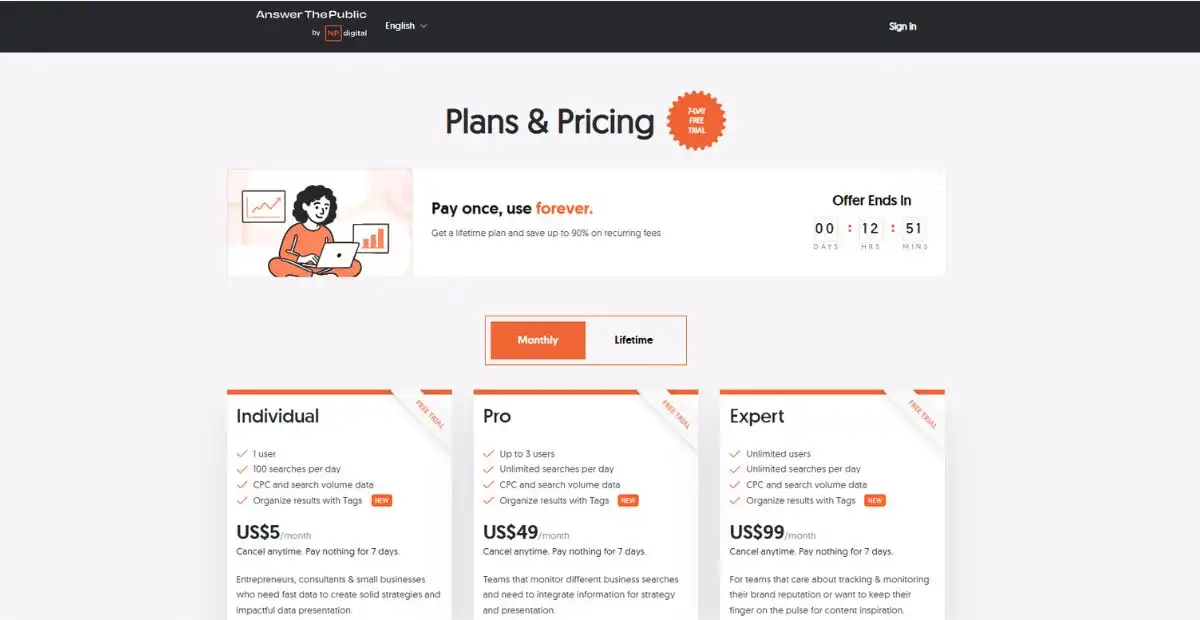
Pricing: Individual: $5/month; Pro: $49/month; Expert: $99/month
3. KeywordsPeopleUse

Website: keywordspeopleuse.com
KeywordsPeopleUse is a unique people also ask tool that focuses on conversational keywords and long-tail questions. It helps uncover exactly how users search online, making it especially valuable for voice search optimization.
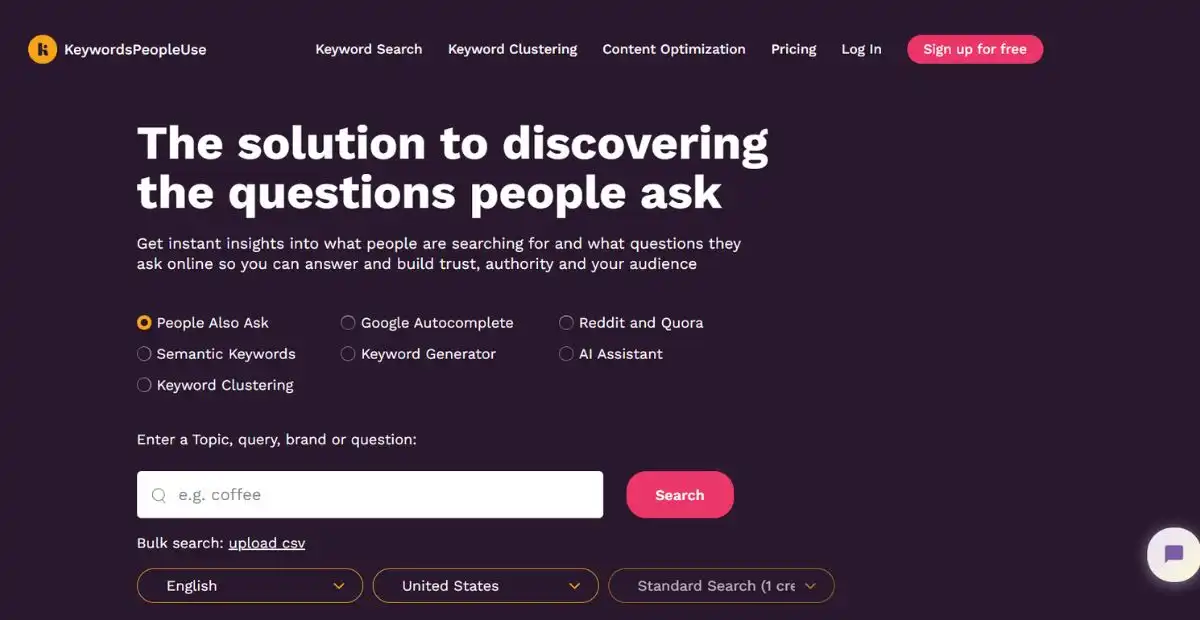
This tool allows you to align your content strategy with natural language queries and improve visibility in Google’s People Also Ask section. For marketers who want to capture user intent-driven traffic, KeywordsPeopleUse is one of the most effective tools available.
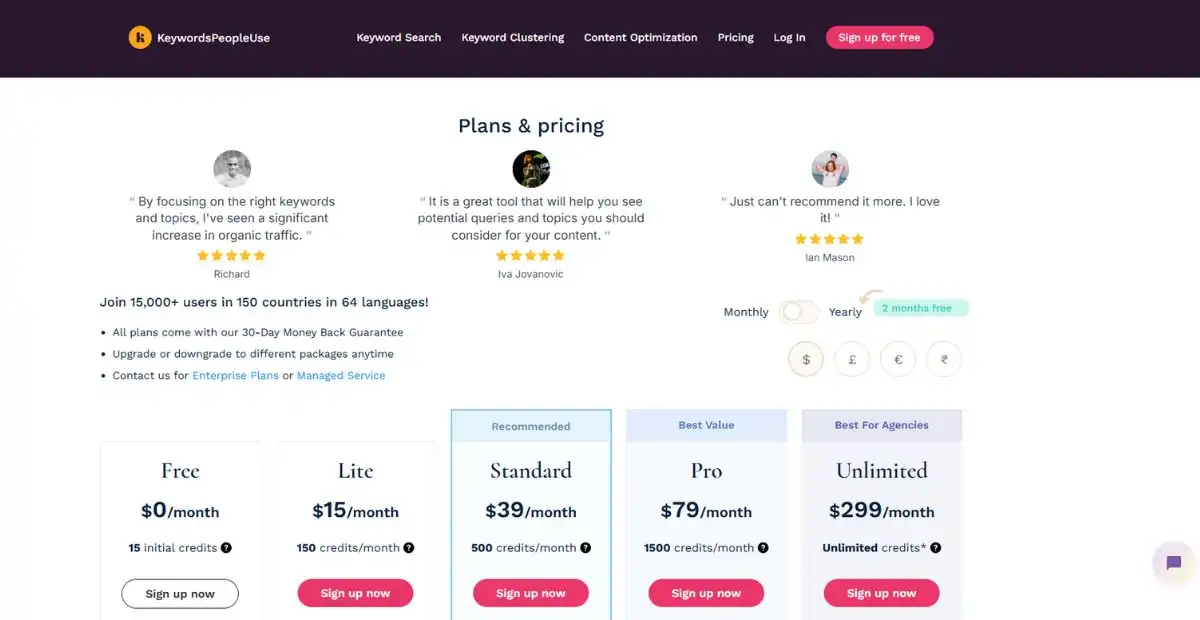
Pricing: Monthly plans starting from $15; Annual plans available
4. Backlinko PAA Tool

Website: https://backlinko.com/tools/people-also-ask
Backlinko’s PAA tool is a free resource created by the well-known SEO training brand founded by Brian Dean. This tool provides insights into related questions and user queries, helping marketers identify content opportunities and topic clusters.
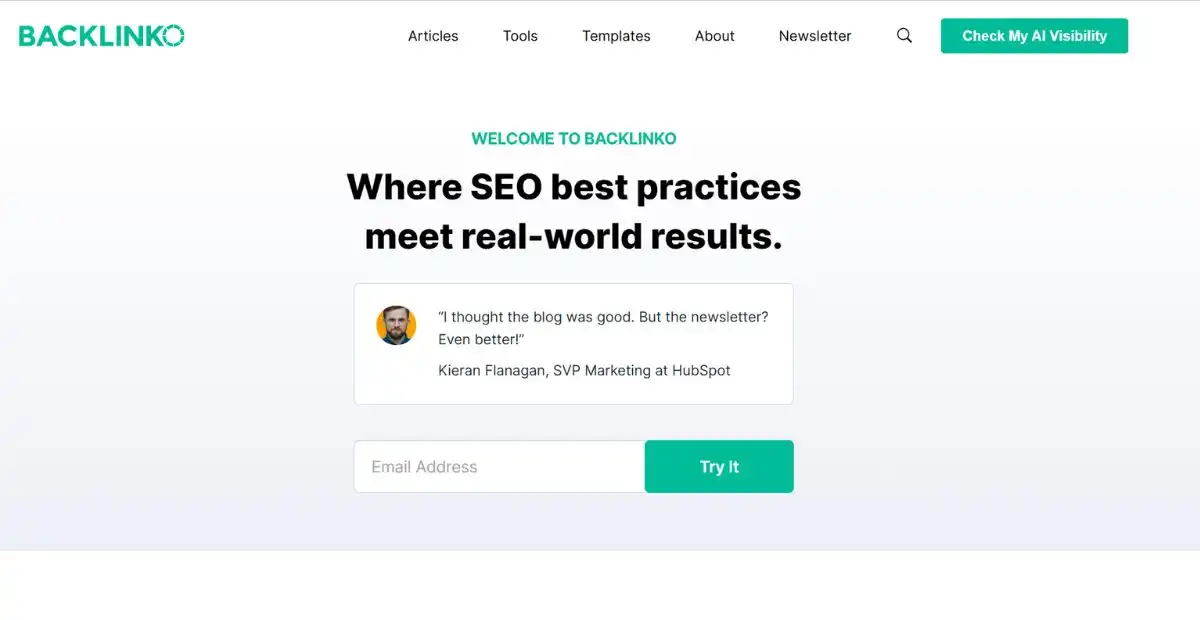
Since Backlinko is a trusted source for SEO research, its free tool delivers data-driven suggestions that can significantly improve content planning. For businesses looking for a budget-friendly but reliable PAA solution, this is a go-to option.
Pricing: Free
5. NeuralText

Website: https://neuraltext.com/people-also-ask
NeuralText combines AI-powered content generation with keyword and PAA insights. It not only helps uncover user questions but also assists in creating optimized answers and content drafts.
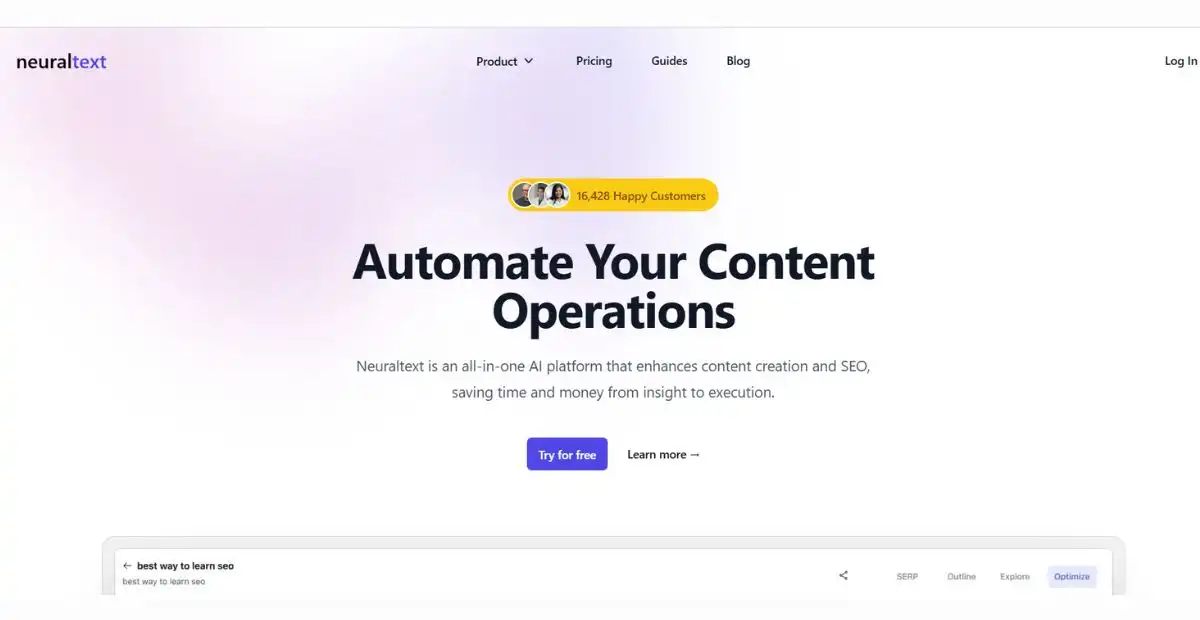
This makes it a unique tool that bridges keyword discovery and content creation in one platform.
With advanced features and pricing plans starting at $19/month, NeuralText is ideal for agencies and businesses that want to streamline their SEO and content marketing workflow.
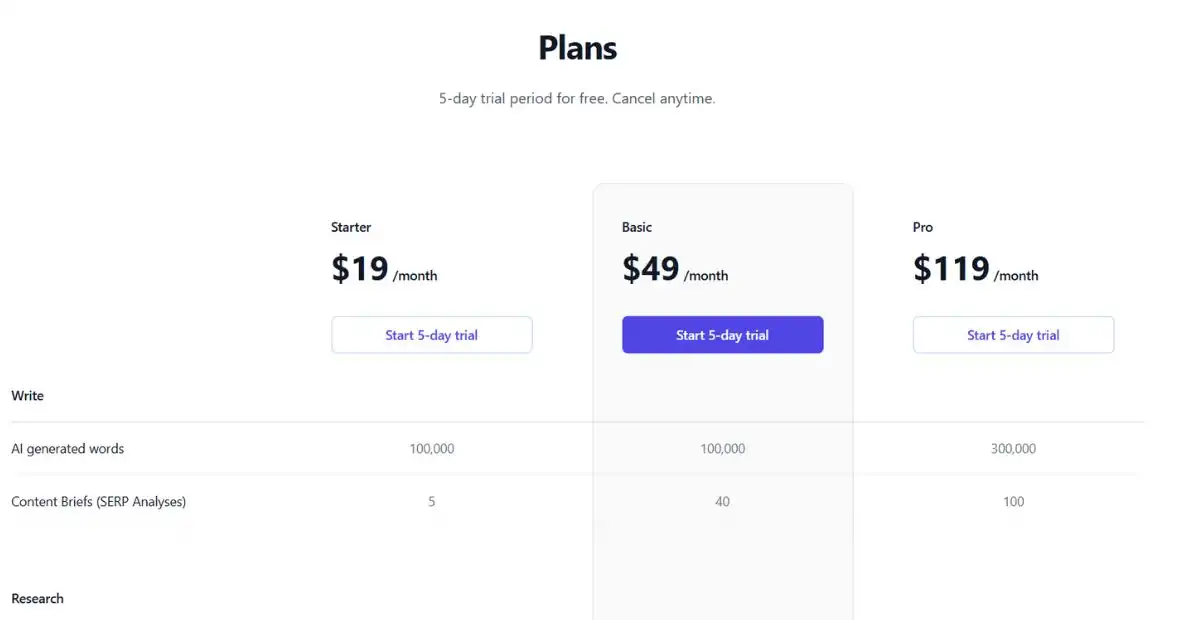
Pricing: Starter: $19/month; Basic: $49/month; Pro: $119/month
6. RightBlogger

Website: https://rightblogger.com/tool/people-also-ask
RightBlogger is designed for bloggers and small businesses who want to quickly find People Also Ask queries and turn them into blog topics.
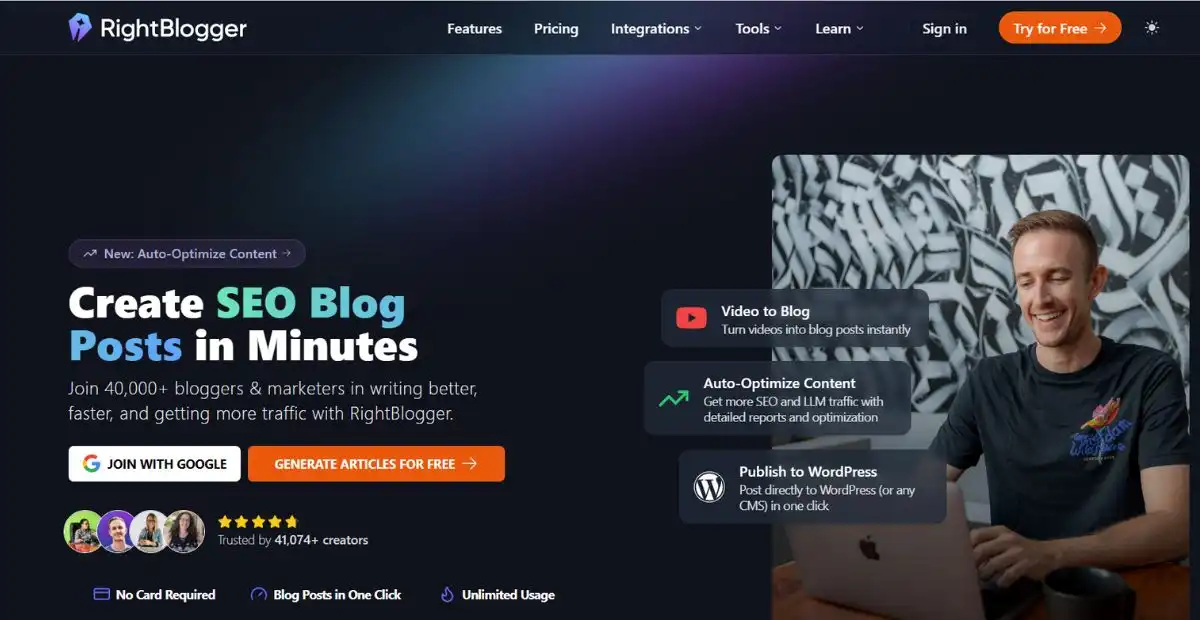
The tool offers a free version with limited functionality and an affordable plan for $29/month.
Its simple interface makes it easy to use, even for beginners who are just starting with SEO. RightBlogger is a practical option for bloggers looking to generate fresh content ideas that align with what people also search for online.
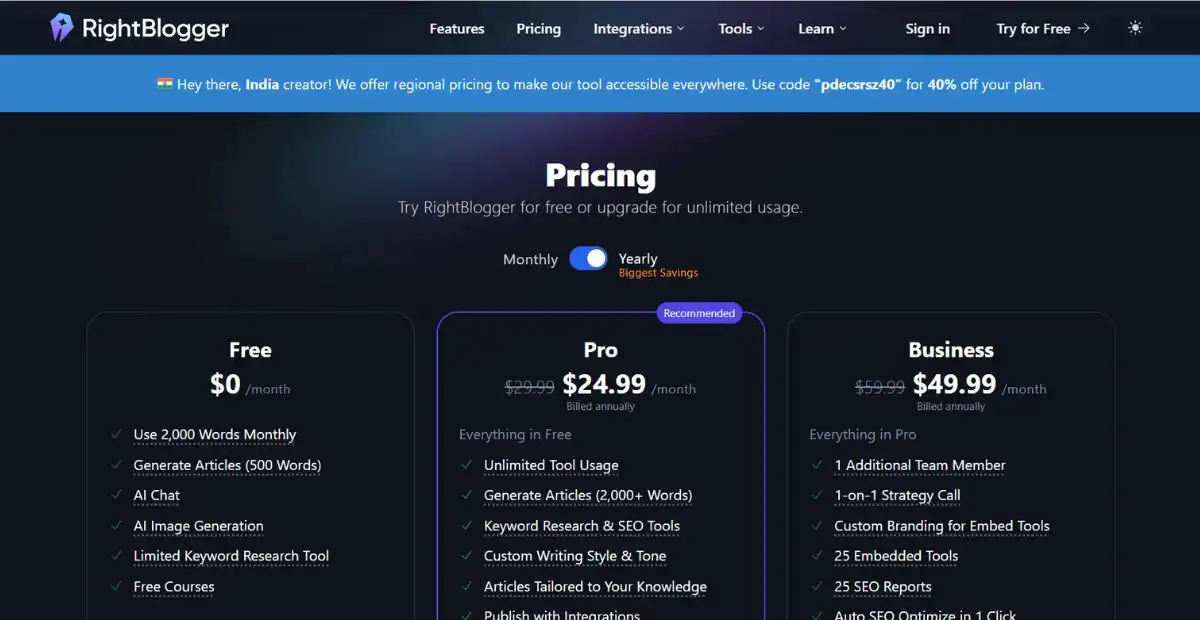
Pricing: Free; Unlimited: $29/month
7. Frase.ai

Website: frase.io/tools/people-also-ask
Frase is a powerful content optimization tool that includes a dedicated People Also Ask feature. It extracts real questions from Google’s PAA boxes, helping marketers create FAQ-rich content and topic-based outlines.
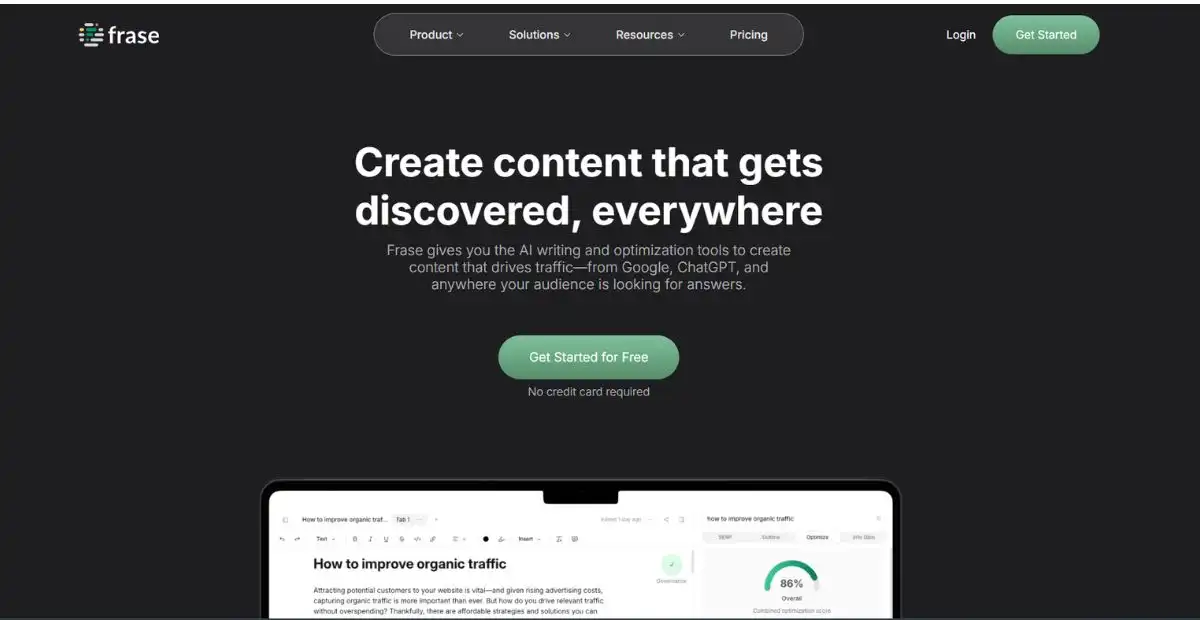
Beyond keyword discovery, Frase also offers AI-driven content briefs, SERP analysis, and optimization tools. With plans starting at $45/month, it’s particularly useful for businesses and agencies that need a comprehensive content marketing platform.
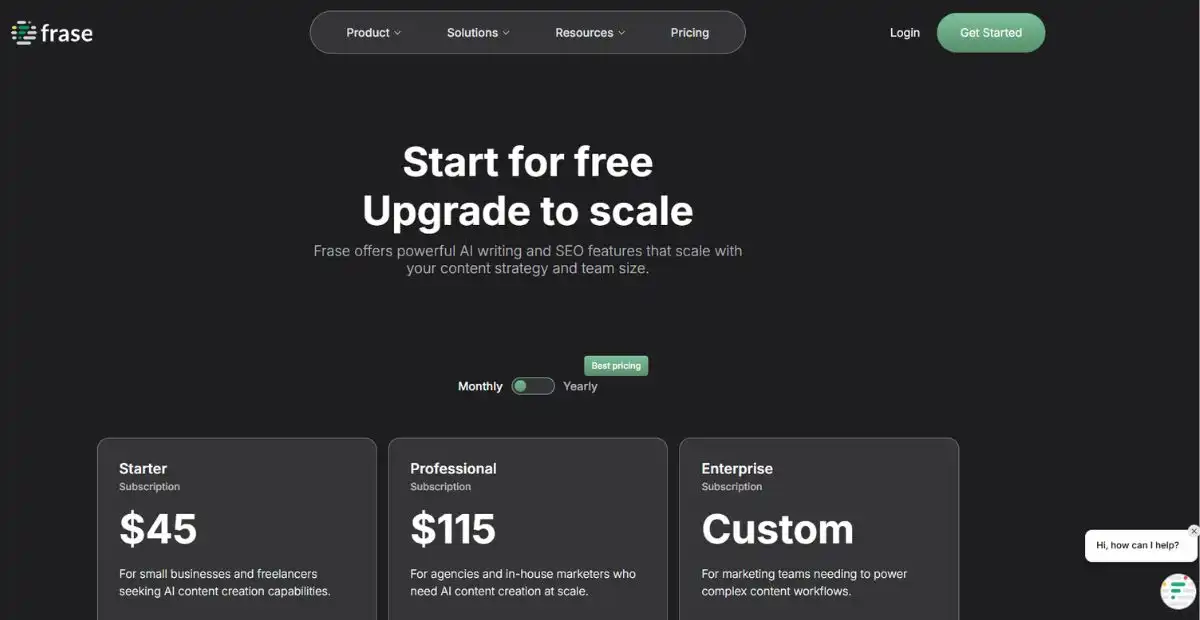
Pricing: Starter: $45/month; Professional: $115/month
8. kwrds.ai

Website: https://www.kwrds.ai/people-also-ask
kwrds.ai is an AI-powered PAA tool that helps discover related questions and queries in a simple, user-friendly way.
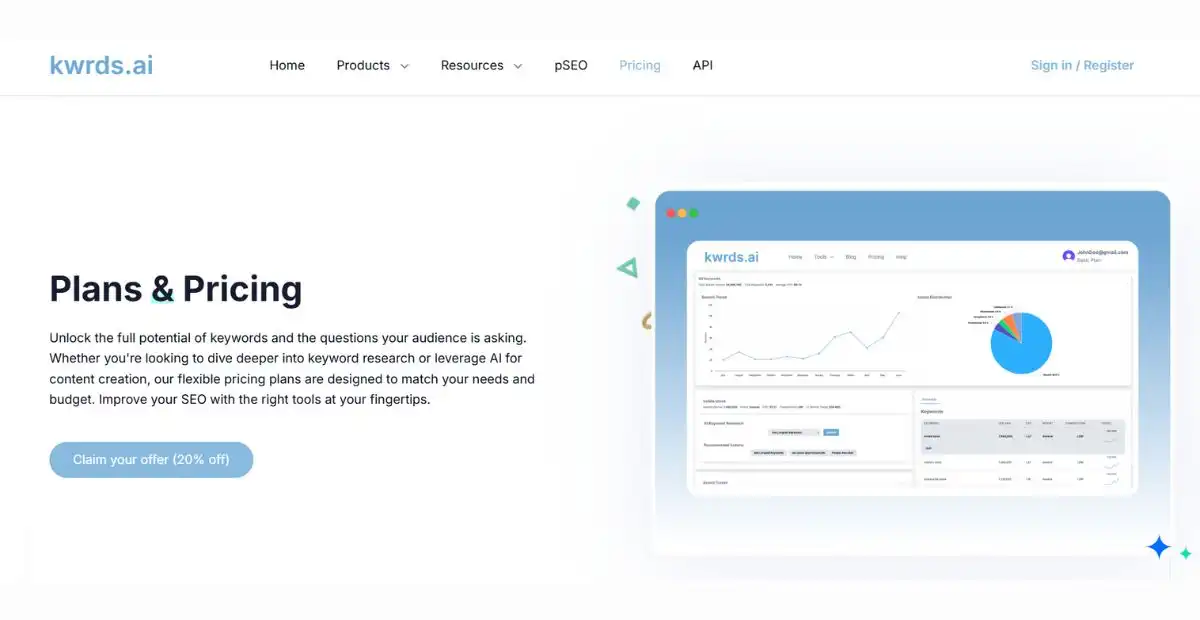
Its free plan is suitable for casual users, while the paid version at $39/month (billed annually) unlocks more advanced features.
This tool is designed for content marketers who want to optimize for PAA boxes without investing in heavy enterprise software. By focusing on clean data and intuitive results, kwrds.ai is ideal for startups and solo marketers.
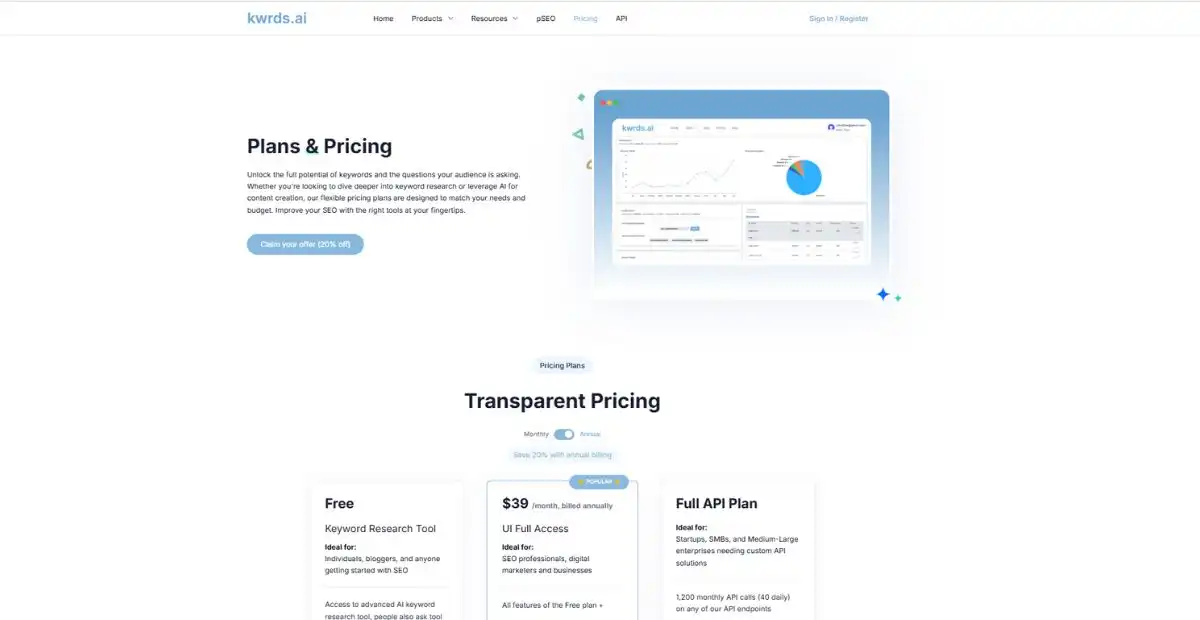
Pricing: Free; $39/month (billed annually)
9. Allintitle

Website: https://allintitle.co/people-also-ask-tool/
Allintitle is a specialized tool that helps identify competition levels for PAA queries. It analyzes how many pages are optimized for specific “allintitle” search terms, giving you a clear view of keyword competitiveness.
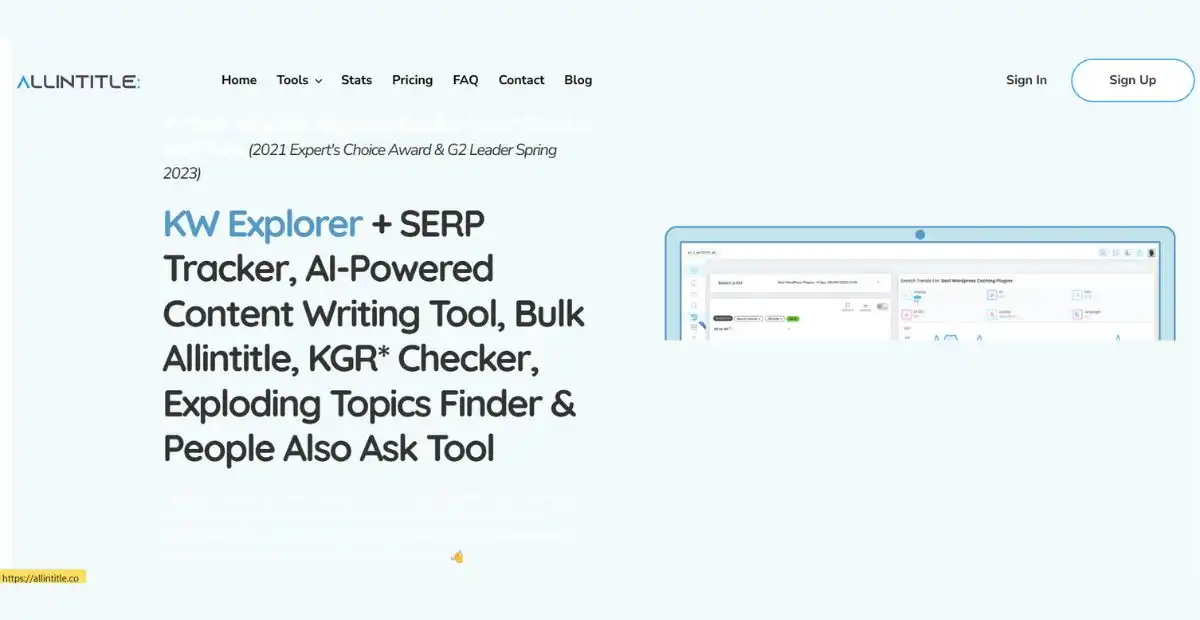
By combining PAA insights with competition data, this tool helps marketers choose the right battles and create content that ranks faster.
With both free and $30/month paid options, it’s a practical tool for SEO professionals focused on efficiency.
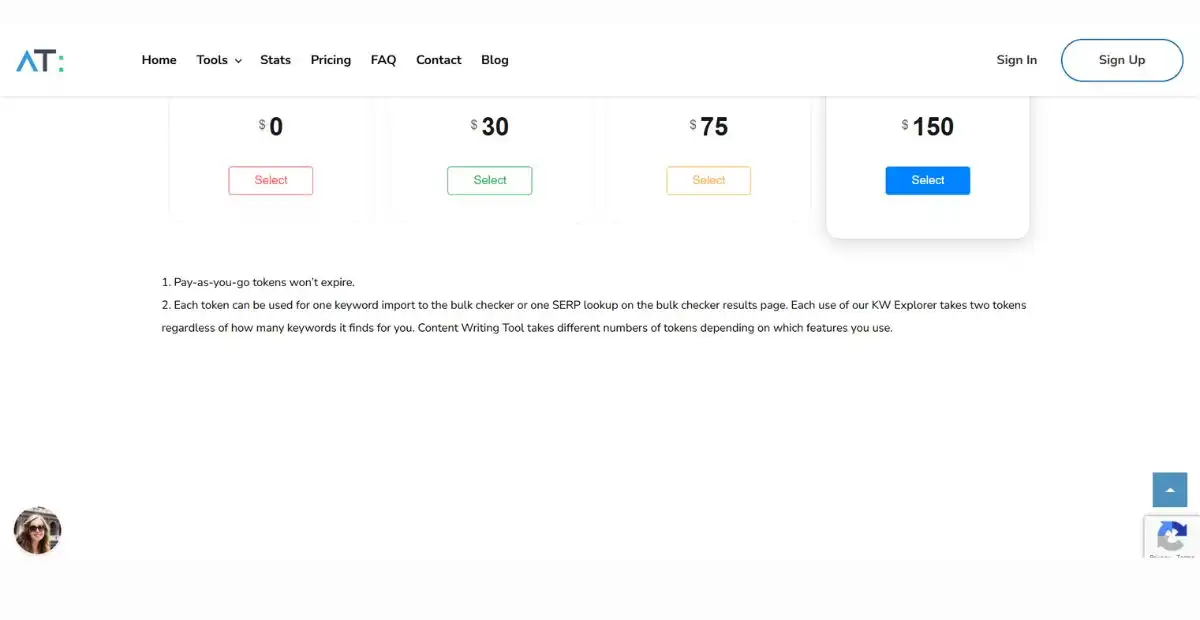
Pricing: Free; Small: $30/month
10. PeopleAlsoAsk.ai

Website: peoplealsoask.ai
PeopleAlsoAsk.ai is a dedicated PAA tool that scrapes real Google questions and organizes them into structured formats.
It’s designed to help marketers quickly export PAA questions for content planning, FAQ sections, and SEO strategies.
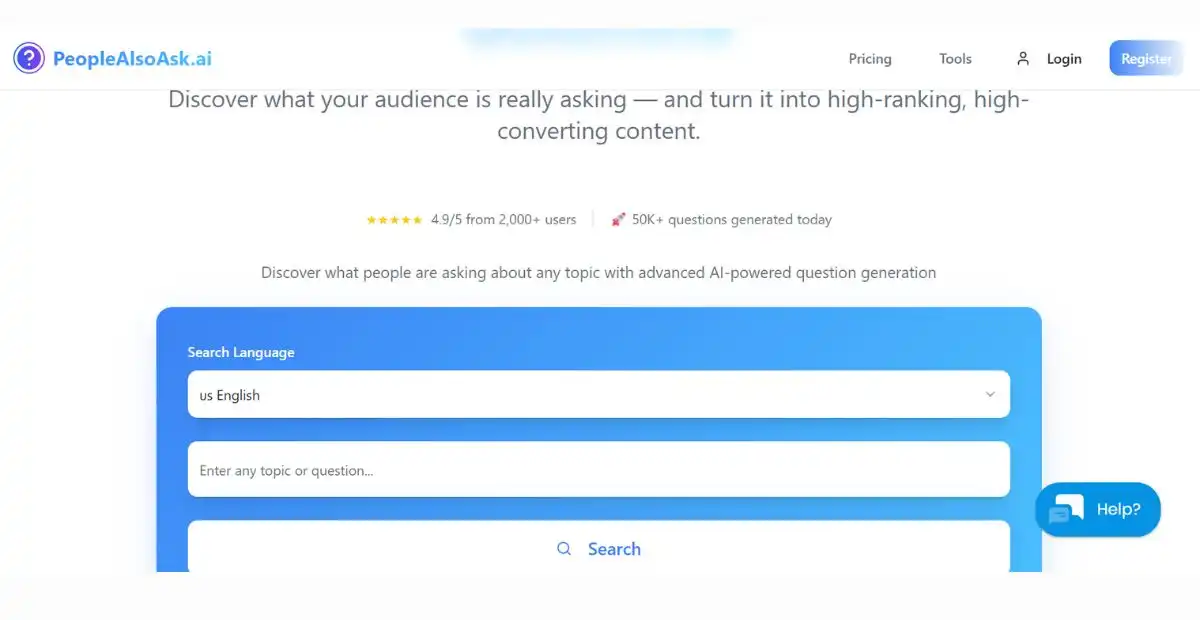
With flexible pricing plans starting at $19/month, it caters to freelancers, agencies, and enterprises alike.
For anyone focused on dominating Google’s People Also Ask results, this tool is one of the most direct and specialized solutions available.
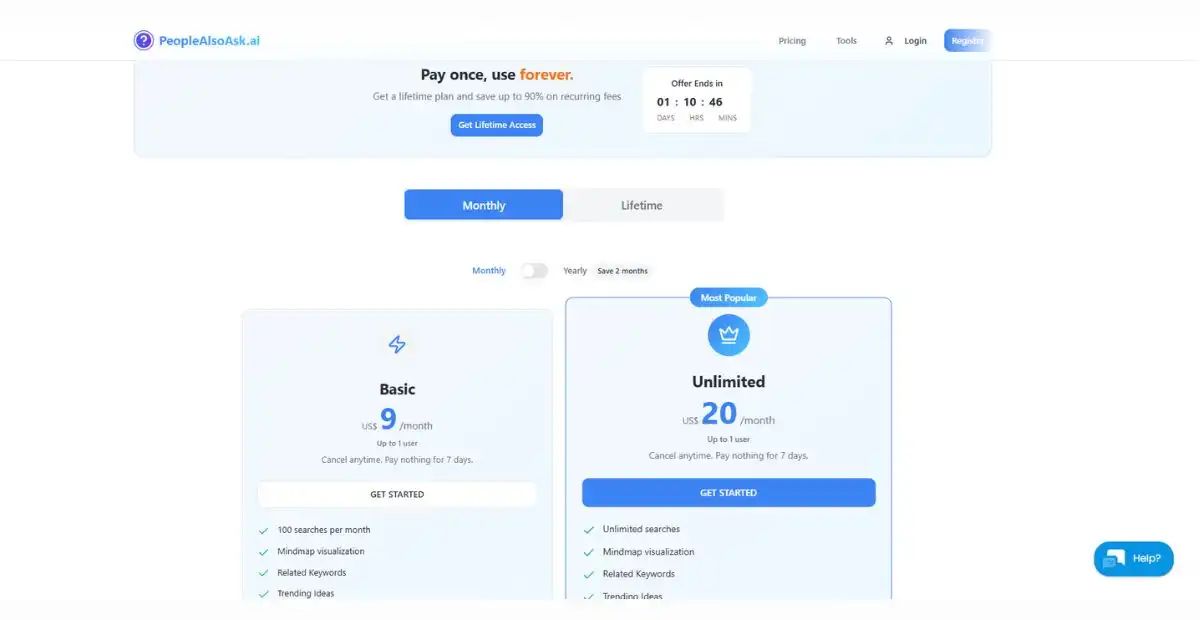
Pricing: Basic: $9/month; Unlimited: $20/month
What is People Also Ask (PAA)?
People Also Ask (PAA) is a Google search feature that appears on the results page in the form of expandable boxes.
Each question, when clicked, reveals a short answer, a source link, and sometimes a snippet of text from a webpage.
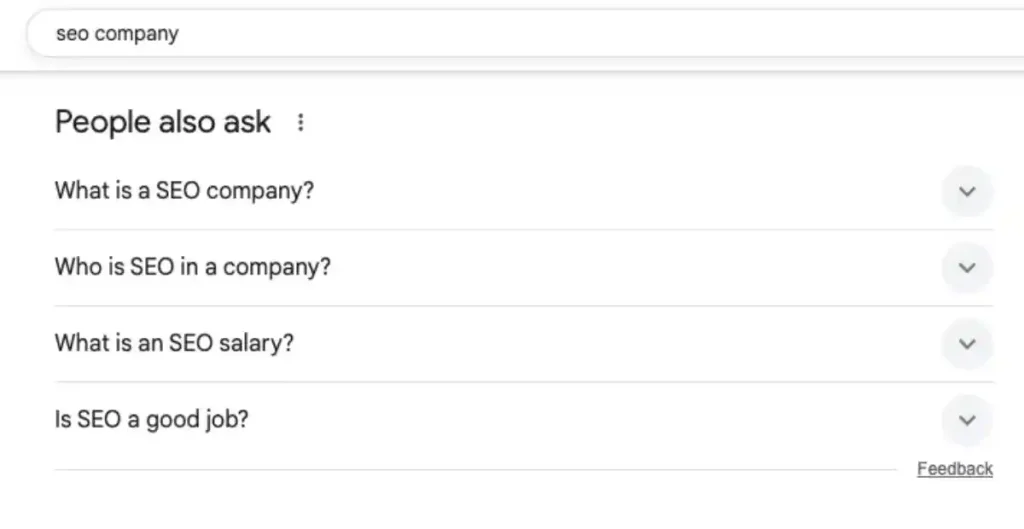
For example, if you search for “seo company?”, you may see PAA questions like:
- “What is a SEO company?”
- “Who is SEO in a company?”
- “What is an SEO salary?”
Each time you expand one question, Google dynamically adds more related questions to the list, creating an endless web of connected queries.
In simple terms: PAA is Google’s way of predicting what else you might want to know.
Why is People Also Ask Important for SEO?
The PAA feature is more than just a set of questions. It’s a goldmine for SEO. Here’s why:
1. Increases Visibility
Ranking in a PAA box places your content directly in front of users at the top or middle of the search results. This means more eyes on your brand even if you’re not in the top 3 organic results.
2. Boosts Click-Through Rates (CTR)
When your answer appears in PAA, users are more likely to click through to your page for deeper insights, especially if your snippet sparks curiosity.
3. Helps Capture Long-Tail Keywords
PAA questions often contain long-tail keywords like “what are the best paa tools” or “best people also ask tools.” Targeting these increases your chances of ranking for multiple queries.
4. Establishes Authority
Appearing in PAA positions your brand as a reliable source of information, strengthening trust with both users and search engines.
5. Supports Voice Search Optimization
Many PAA queries are conversational, making them perfect for voice search strategies. For example, someone might ask Alexa or Siri: “what are the best people also ask tools?”
People Also Ask vs People Also Search For
It’s easy to confuse PAA with PASF (People Also Search For). Here’s a simple breakdown:
| Factor | People Also Ask (PAA) | People Also Search For (PASF) |
|---|---|---|
| Appearance | Dropdown Q&A boxes on the SERP | Appears after a user clicks a result and comes back to SERP |
| Format | Question + short answer snippet + link | List of related keywords |
| User Intent | Direct, informational queries | Alternative search paths |
| Best Use Case | FAQ creation, voice search, content optimization | Keyword clustering, content expansion |
Both are powerful, but PAA helps answer questions upfront, while PASF helps you understand connected searches.
How to Find PAA Questions for SEO
If you want to optimize for PAA, you need to know how to find these questions. Here are some methods:
1. Manual Google Search
Type in your keyword and check the PAA box. Expand the questions to see more suggestions.
2. SEO Tools
Some tools automate the process:
- AlsoAsked – Shows PAA queries in a tree structure.
- AnswerThePublic – Creates visual maps of related questions.
- KeywordsPeopleUse – Highlights conversational queries.
- PeopleAlsoAsk.ai – Extracts PAA questions at scale.
3. Competitor Research
Check high-ranking competitor blogs. Many of their headings and FAQ sections are optimized versions of PAA queries.
4. Content Analysis Tools
Platforms like Alsoasked or AnswerThePublic can extract PAA questions for specific keywords and help integrate them into your content.
What Is People Also Search For?
People Also Search For (PASF) is a Google feature that shows users related search queries based on their initial keyword. It appears after a user clicks on a search result and then quickly bounces back to the SERP (Search Engine Results Page).
For example, if someone searches “best SEO tools”, clicks on a result, and then returns to Google, they may see queries like:
- “Free SEO tools for beginners”
- “What is the best keyword research tool?”
- “SEO tools for small businesses”
This is Google’s way of predicting what else the user might want to know—a goldmine for SEO professionals because it reveals secondary intent.
People Also Search For (PASF) vs People Also Asked (PAA) – Key Differences
| Factor | People Also Ask (PAA) | People Also Search For (PASF) |
|---|---|---|
| Definition | A SERP feature that shows a dropdown list of questions related to the original query. | A SERP feature that shows related queries after a user clicks a result and returns to SERP. |
| Trigger Point | Appears instantly on the search results page. | Appears only after a user clicks on a result and then goes back to the search results. |
| Format | Interactive Q&A format with expandable dropdowns. | A simple list of related searches (usually at the bottom of the snippet or sidebar). |
| User Intent Focus | Focuses on answering immediate questions of users. | Focuses on suggesting alternative or related search journeys. |
| Content Value | Helps in creating FAQ sections, blog posts, and direct answer content. | Helps in expanding topic clusters and internal linking opportunities. |
| Placement in SERP | Visible directly within search results, usually in the middle of the page. | Appears under the clicked result when a user returns, or sometimes at the bottom of SERP. |
| SEO Opportunity | Great for capturing featured snippets and direct traffic. | Great for building topical authority and covering related subtopics. |
| Best Use Case | When targeting queries that users phrase as questions (“how,” “what,” “why”). | When building keyword clusters and understanding broader user search behavior. |
| Examples | Search: “What is SEO?” → PAA shows: “What are the basics of SEO?”, “Why is SEO important?” | Search: “SEO tools” → PASF shows: “best free SEO tools”, “SEO audit tools”, “local SEO tools”. |
Why is People Also Search For Important in SEO?
1. Reveals User Intent
PASF queries give insight into what the user is really looking for. Instead of just targeting a single keyword, you can create content that addresses multiple connected topics.
2. Increases Content Relevance
By including PASF queries in your content, you improve topical authority. Google rewards websites that answer more user queries within the same piece of content.
3. Boosts Organic Visibility
Optimizing for PASF increases your chances of appearing in multiple SERP features—from PASF sections to related searches, and even People Also Ask boxes.
4. Reduces Bounce Rate
When your content covers secondary queries that users are likely to search next, they stay longer on your page, improving engagement and reducing bounce rate.
5. Helps Build Topic Clusters
PASF is perfect for topic clustering, a strategy where you interlink related articles to strengthen your site’s authority on a subject.
How to Find PASF Keywords (Explained Simply)
Finding PASF keywords is like discovering the “next step” a user might take after searching for something on Google.
Here’s how you can do it:
1. Manual Google Search
Imagine you Google “people also ask”.
You click on one of the search results, read a little, and then hit the back button to return to Google.
Right under the result you clicked, Google will now show “People Also Search For” suggestions (as shown in image), like:
- “people also ask tool”
- “people also ask google”
- “people also ask questions” etc.
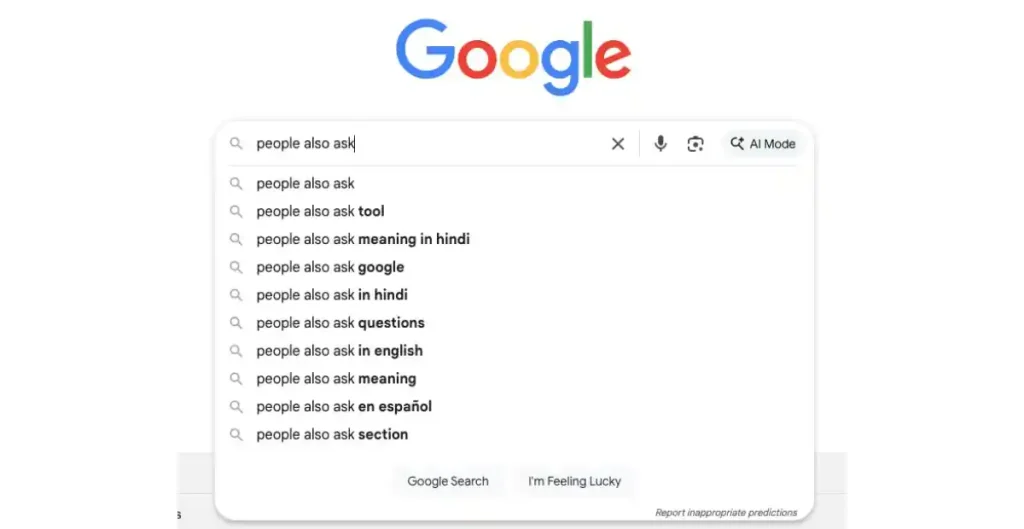
These suggestions are People also search for (PASF) keywords. Simple trick: repeat this process with your important keywords to gather a list of related searches.
2. Using SEO Tools
Instead of doing everything manually, you can use tools that show PASF-style keywords instantly:
- AlsoAsked → Shows related questions and searches in a tree-like diagram. Perfect if you want to see how ideas are connected.
- AnswerThePublic → Turns Google autocomplete and PASF searches into a cool visual “keyword map.”
- KeywordsPeopleUse → Focuses on real, conversational queries people type (great for voice search).
- PeopleAlsoAsk.ai → Specialized tool to quickly extract PASF keywords for any topic.
These tools save time and give you hundreds of related keyword ideas at once.
3. Competitor Research
Think of your competitors as teachers — they’ve already done some homework.
- Visit blogs or websites that rank high for your target keywords.
- Look at their headings, FAQs, and subtopics — many of these are actually optimized PASF queries.
By analyzing them, you can spot which PASF keywords they’re using and add those to your own content.
Strategies to Optimize for People Also Search For
1. Add PASF Keywords to Content
Identify PASF queries and naturally integrate them into:
- Blog subheadings (H2/H3)
- FAQs section
- Meta descriptions and title tags
- Anchor text for internal linking
2. Create FAQ Sections
Google loves question-based content. Adding an FAQ section that addresses PASF queries improves chances of ranking in both PASF and PAA.
3. Use Topic Clusters
Build pillar content around a main keyword and create cluster articles for PASF queries. Interlink them for stronger SEO.
Example:
- Pillar: “Ultimate Guide to SEO Tools”
- Cluster: “Best Free SEO Tools” / “SEO Tools for Small Businesses” / “How to Choose SEO Tools”
4. Optimize for Voice Search
Since PASF often includes conversational queries, optimize your content for voice search by using natural, question-based sentences.
5. Implement Structured Data (Schema)
Using FAQ schema increases the chances of PASF-related queries being pulled into SERP features.
6. Refresh Old Content
Review your existing blogs and update them with PASF keywords to stay relevant and capture new search queries.
People Also Ask and Searches For
What do people also ask mean?
People Also Ask (PAA) is a Google SERP feature that displays a box of related questions users commonly search for. Each question can be expanded to reveal a short answer and a link to the source page.
When you click on a PAA question, Google shows a short snippet of content from a website. Each click also generates more related questions, expanding the list dynamically.
Why is People Also Ask important for SEO?
Ranking in PAA can boost visibility, capture long-tail keywords, and establish authority. It helps websites appear directly in front of users even without ranking first on Google.
Are people also ask AI?
No, People Also Ask (PAA) is not AI itself.
It’s a Google search feature that uses algorithms (and yes, AI/ML in the background) to display related questions users often search for. The answers shown in PAA come from existing web pages, not generated by AI like ChatGPT.
Is AlsoAsked free?
AlsoAsked offers a limited free version that allows you to run up to 3 searches per day without signing up or entering payment information—perfect for casual or exploratory use.
For more frequent or advanced usage, their subscription plans start at $12/month (Basic) and go up to $47/month (Pro), unlocking features like more search credits, CSV exports, deep search modes, bulk capabilities, and API access.
How to create people also ask?
You can’t directly create People Also Ask (PAA) boxes, as Google generates them automatically.
However, you can optimize your content by using question-based headings, writing clear and concise answers (40–60 words), and adding FAQ schema. This increases your chances of appearing in PAA results.
How to see people also search for?
You can see People Also Search For (PASF) by doing a Google search for your keyword, clicking on one of the results, and then pressing the back button to return to the SERP. Under the clicked result, Google will display related queries as PASF suggestions.
You can also explore them using people also ask tools like AlsoAsked, AnswerThePublic, or KeywordsPeopleUse for faster discovery.
How to get featured in People also Ask?
To get featured in People Also Ask (PAA), create content that directly answers common questions in your niche. Use question-style headings (H2/H3), provide clear and concise answers in 40–60 words, and expand with detailed explanations below.
Adding FAQ schema markup and updating content regularly also improves your chances of appearing in PAA boxes.
Wrap Up Thoughts
The People Also Ask (PAA) feature is one of the most powerful ways to boost your SEO strategy. By targeting PAA questions, you’re not only answering what users want but also positioning your content where it matters most—directly on the search results page.
If you want to stay ahead in SEO, start analyzing and optimizing for PAA today. Think of it as answering the questions your audience hasn’t even asked you yet.
